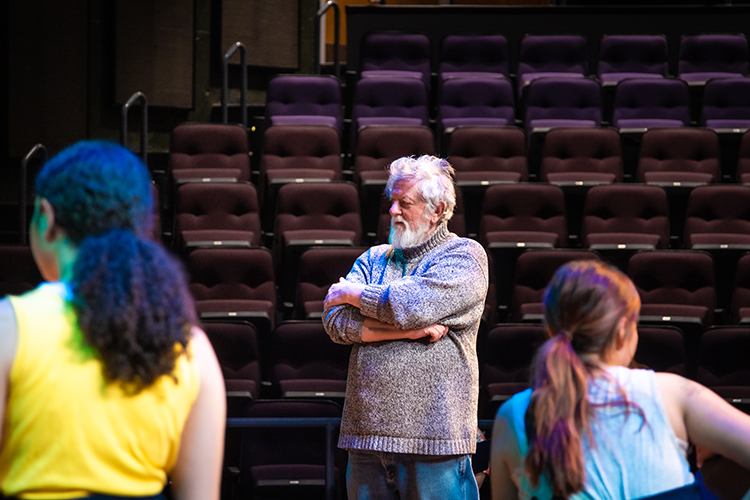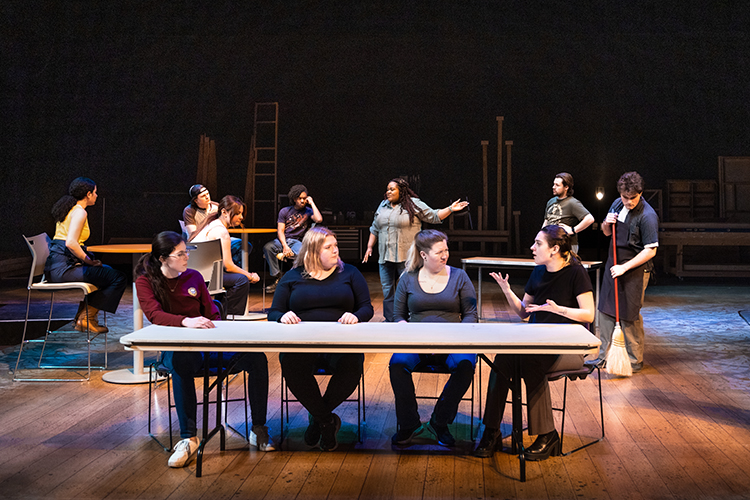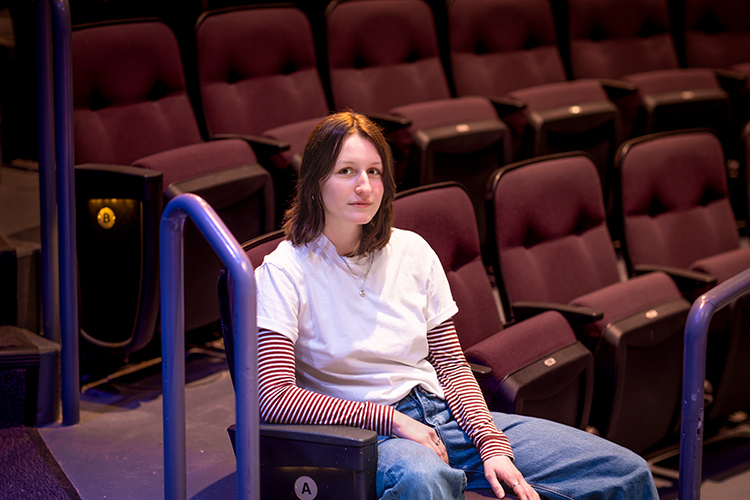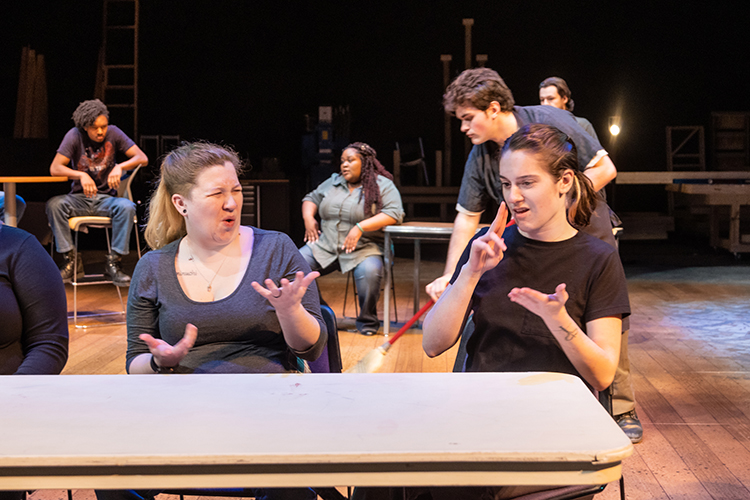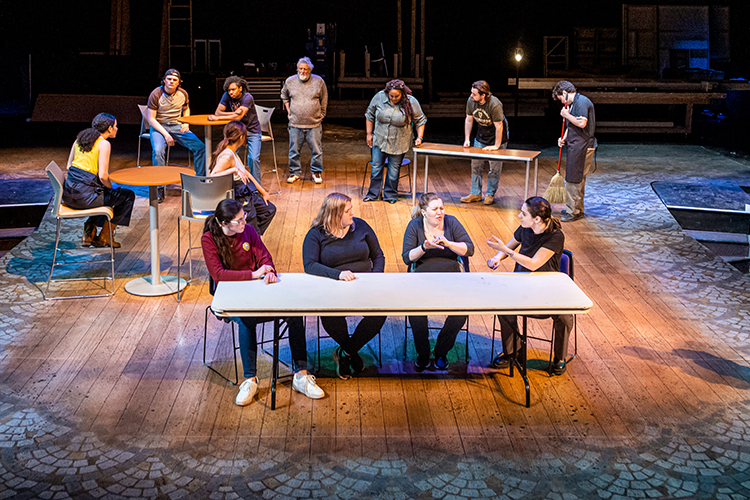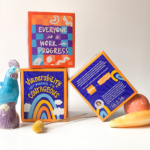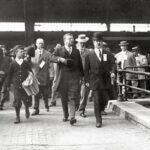Most people consider theater as a part of hearing culture. Sure, there are theater companies that perform exclusively for deaf audiences. And theater productions often provide American Sign Language interpreters located off to one side of the stage.
But Ralph Janes believes everyone can better enjoy the show if the two languages were represented more equally. That means bringing the ASL interpreters into the action on stage.
“We (the hearing) focus on the speaking actors, while the Deaf and hard-of-hearing community focus on both,” said Janes. “Once you put the interpreters on the stage, the hearing audience can’t ignore them anymore. So it becomes part of the shared vocabulary of the piece. It’s very exciting.”
Local audiences can experience this in UWM’s April production of “Sweat.”
Growth of sign language exposure
This more inclusive step mirrors a trend happening in theater companies in larger cities, said Janes, who teaches theater education in the Peck School of the Arts and is directing “Sweat.”
Sign language interpreting is a growing aspect of many public events today – including musical performances. Rhianna’s Super Bowl halftime show this year, for example, featured a deaf interpreter. It was only the second time the halftime show had an interpreter.
Producing “Sweat” continues a five-year-old partnership between Janes and Pamela Conine, coordinator of UWM’s American Sign Language Interpreting Program. Through it, the two departments provide a mutually beneficial learning platform for both student interpreters and student actors for one play a semester.
“Sweat,” written by Black playwright Lynn Nottage, won the 2017 Pulitzer Prize in drama. It takes on topics like gender, race and immigration.
A secret weapon
Directing “Sweat” is “a big lift” because it can be difficult to direct both language realities simultaneously, Janes said.
But he has a secret weapon: his assistant director, UWM senior Marie Helser, who shares his passion for more accessible theater and has a unique background for this project.
Helser is not deaf, but she had already begun learning ASL by viewing videos on YouTube by the time she enrolled in UWM to study theater. After transferring to UWM from MATC in Madison, Helser said, her ASL skills flourished.
“In Deaf culture, it’s important for deaf people to be the ones to teach ASL,” she said. “We have a lot of deaf professors here. And UWM is one of the most unique places in the Midwest because of that.”
She ultimately changed her UWM major to American Sign Language Studies with a minor in theater with the aim of being professionally involved in both.
How to place actors
Janes left the first decision to Helser: determining onstage placement of the actors and interpreters in relation to each other and the audience. One challenge was to choose an option that would accommodate the venue’s “thrust” stage, one that is surrounded by the audience on three sides.
The entire play is set in a bar where factory workers with long friendships meet to unwind. So Helser seized upon the idea of putting the interpreters across the front of the stage, sitting at a long table where both hearing and non-hearing patrons can see them under the lights and in costume.
“For me, accessibility is when you get to see your language integrated in the same way as the spoken language,” she said.
“Sweat” is Helser’s first experience with both actors and interpreters on stage, but it won’t be her last.
In June, she will be assistant director for the American Players Theatre production of “Romeo and Juliet” in which the lead male role will be played by deaf actor Joshua Castille.
The uniqueness of ASL
In some ways, ASL is a good language for integrating with the spoken word because it’s so visual, Conine said. But the two languages also are starkly different. ASL is a very complex skill that does not follow English grammar.
“So it’s a very visually dense language,” she said. “I can do something with one or two signs that is very compact. Deaf people use their facial expressions the way that speakers use intonations in their voices.”
Using your face and body is also necessary in interpreting for other purposes, said Conine, and the experience of signing for theater draws that out of the students.
“I think we’re used to sugar-coating with spoken language,” said Maya Shub, one of the student ASL interpreters for the show. “Things in spoken language may be put in a nicer way. But the ASL interpreter has to make sure the message is made explicit for their deaf consumers.”
Interest rising
Interest in the UWM’s program is rising, said Conine, thanks in part to exposure on social media and in pop culture.
Current students grew up watching the TV show “Switched at Birth,” in which one of the main characters is deaf and signs her part with subtitles for the viewers. More recently, students may have seen the Oscar-winning 2021 movie “CODA,” about a teen girl who is the only hearing person in her deaf family.
But social media has probably had the most impact on stoking interest in ASL, said Zoe Svanoe, another of the student ASL interpreters for the show. “I’ve noticed a lot of people are learning how to sign from TikTok,” Svanoe said. “They can learn enough to have minor interactions and create content on TikTok.”
More diversity is good for theater, director Janes said, because it tightens the relationship between the actors and interpreters, improving the understanding of the characters. Ultimately, he hopes to see performances presented in multiple modes of communication and with more differently able actors.
“It may some adjustment,” he said. “But after a while, hearing theatergoers will start to process the story in the same way that they process their everyday world. If you think about it, we don’t usually focus on one aspect of the world around us; we’re usually multi-stimulus.”
